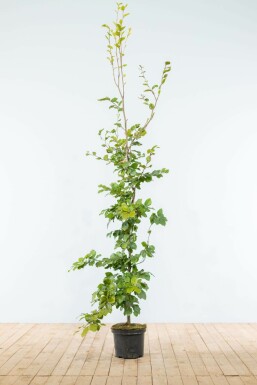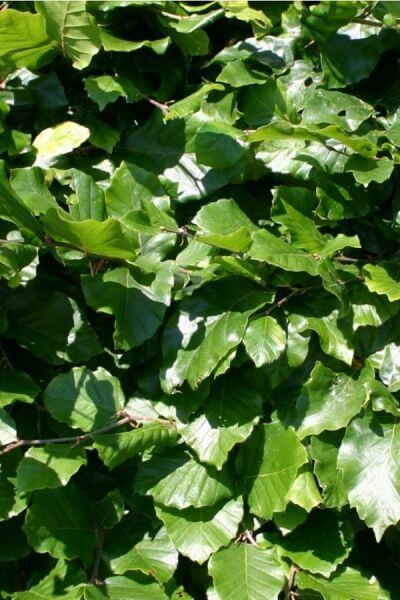Hedge Plants For Natural Landscapes
Hedge Plants For Natural Landscapes
Blog Article
Hardy Hedge Plants For Cold Climates
Enhance your garden's allure with lavish hedge varieties such as Yew (Taxus), Thuja, Laurel, Photinia, and Bamboo, commemorated for their structural integrity and environmental advantages.
Yew and Thuja offer evergreen protection and winter strength, while Laurel offers fast development and broad, fragrant leaves.
Photinia includes seasonal charm with its vibrant red foliage, and Bamboo lends a low-maintenance, serene atmosphere.
These hedges enhance air quality, lower sound, and create tranquil, personal areas.
Proper planting, spacing, and upkeep make sure vigorous growth and eco-friendly harmony.
Explore how these rich ranges can raise your garden's beauty and well-being.
Key Takeaways
Transform Your Garden With Lush Hedge Varieties
- Select Yew for its thick, evergreen development and unrivaled durability.
- Go with Laurel for its fast growth and broad leaves, guaranteeing fast personal privacy.
- Pick Photinia for its dynamic seasonal foliage, which turns a striking dark red.
- Use Bamboo for a low-maintenance, winter-hardy hedge with visual appeal.
- Area plants 2-3 per meter and prune frequently for optimum development and health.
Popular Hedge Plants
When transforming a garden with lush hedge varieties, it's important to consider popular hedge plants such as Yew, Thuja, Laurel, and Photinia due to their distinct qualities and advantages.
Yew (Taxus) is extremely respected for its durability and thick, green growth, making it a prime choice for withstanding landscapes.
Thuja is noted for its evergreen foliage and robust winter resilience.
Photinia adds seasonal vibrancy with red leaves that darken over time, creating dynamic visual appeal.
Laurel provides quick development and aromatic, broad leaves, suitable for fast personal privacy.
Additionally, Bamboo is an outstanding choice for ambiance, offering a low-maintenance, winter-hardy option that boosts the garden's visual with its sophisticated, swaying walking sticks.
These selections cater to a variety of horticultural requirements and choices.
Benefits of Garden Hedges
Garden hedges offer a multitude of benefits, making them a valuable addition to any landscape. These natural barriers are cost-effective to carry out and supply considerable wind protection, boosting air flow and contributing to sound decrease. The dense foliage of hedges like Thuja and Beech makes sure privacy by blocking exposure, developing a tranquil and secluded environment.
Hedges also play a vital function in microclimate policy, providing a steady environment that fosters plant development and reduces temperature level changes. Their intricate leaf structures filter contaminants, improving air quality and adding to a healthier garden environment.
Furthermore, hedges master sound decrease, taking in and deflecting sound waves to lower ambient sound levels. This dual functionality of supplying both visual and acoustic personal privacy enhances the total tranquility and visual appeal of any garden.
Planting and Upkeep Tips
For a successful hedge, precise preparation of the planting location is essential. Ensure the soil has appropriate pH and drain to support strong root development.
Space the plants properly for the picked species. Water the hedge often throughout its preliminary development stage, changing as needed with seasonal changes.
Implement a methodical pest control and disease prevention strategy, utilizing chemical or organic treatments when required. Regularly check for aphids, termites, and fungal infections.
Apply mulch to retain wetness and suppress weeds. Seasonal pruning promotes dense development and air flow, essential for plant health.
Following these standards will help you cultivate a lively, properly maintained hedge that improves the beauty of your garden.
Spacing and Cutting Guidelines
Spacing and Cutting Guidelines
Appropriate spacing and cutting are important for cultivating healthy, visually appealing hedges. Appropriate spacing ensures each plant gets sufficient nutrients, light, and air flow.
Follow these guidelines for ideal hedge upkeep:
- Spacing: Position hedge plants 2-3 plants per meter to encourage robust development.
- Pruning Techniques: Routine pruning is vital for maintaining wanted hedge height and shape. Trim new development in summertime and cut down older wood during winter.
- Seasonal Care: Change trimming techniques and schedules according to seasonal requirements to ensure plant health.
- Hedge Height: Routinely display and trim to preserve the desired hedge height and accomplish consistent aesthetics.
Following these actions will guarantee your hedge prospers, boosting both the appeal and performance of your garden.
Picking the Right Hedge
Choosing the Right Hedge
Choosing the proper hedge includes evaluating elements such as fully grown height, foliage density, and ecological strength. Successful hedge plant selection requires comprehending each types' growth attributes and site-specific adaptability.
For instance, Yew (Taxus) provides outstanding longevity and thick growth, while Thuja is significant for its winter resilience. Additionally, thinking about maintenance requirements is vital; fast-growing species like Laurel or Privet need regular cutting, whereas low-maintenance choices like Bamboo or Ivy may be more effective for those seeking very little upkeep.
Ecological factors such as soil type, light accessibility, and wetness conditions must likewise direct the choice process. This cautious technique guarantees the chosen hedges will prosper, supplying both aesthetic and practical advantages to the garden landscape.
Delivery and Planting Suggestions
To ensure your hedge plants flourish, they need to be delivered by specialized carriers and planted promptly upon arrival.
Follow these important actions for successful planting:
- Soil Preparation: Enhance the soil with raw material to enhance drainage and nutrient content.
- Planting Depth: Produce a trench two times the width and equal to the depth of the root ball.
- Watering Techniques: Water thoroughly after planting, keeping the soil regularly wet but not filled.
- Mulching: Use a layer of mulch to retain moisture and reduce weeds.
Consumer Support and Service
Provided the important function of prompt assistance in horticultural pursuits, our customer support team is offered six days a week through telephone, e-mail, and social media to offer professional recommendations and promptly resolve any issues. Their commitment to fast action times makes sure client fulfillment by dealing with queries connected to plant health, ideal planting techniques, and maintenance schedules.

Within 48 hours
This thorough support group, strengthened by an outstanding 9.3/ 10 consumer ranking, highlights our commitment to enhancing the gardening experience for each customer.
Often Asked Concerns
The Length Of Time Does It Consider Hedge Plants to Establish?
Hedge plants generally require one to three years to become fully established, with the exact duration varying by species and growing conditions.
Effective care during this critical period is essential for robust development. Constant watering, alert weed control, and proper fertilizer application are essential in promoting strong root advancement.
For instance, fast-growing species like Laurel may establish faster, while slower-growing ranges such as Yew may take longer. Persistent maintenance accelerates the establishment procedure, leading to healthy and dense hedges.
What Are the very best Hedge Plants for Privacy?
The question of the very best hedge plants for personal privacy includes assessing evergreen and deciduous choices.
Evergreen hedges like Thuja, Laurel, and Cypress provide year-round protection, making sure continuous privacy.
On the other hand, deciduous hedges such as Beech provide seasonal privacy, shedding leaves in colder months.
Secret maintenance tips for personal privacy hedges include regular cutting, fertilizing in spring, and correct spacing-- usually 2 to 3 plants per meter.
Additionally, constant watering and persistent weed removal are crucial for promoting healthy, thick growth.
Can Hedge Plants Bring In Wildlife to My Garden?
Yes, hedge plants can draw in wildlife to your garden by providing vital benefits like shelter, food, and nesting websites, thus boosting local biodiversity. Yew, holly, and laurel are exceptional for attracting birds, while ivy supports a range of insects.
However, it is very important to keep in mind that there are some disadvantages, such as increased upkeep to handle bugs and routine maintenance. Carefully selecting and keeping hedge ranges can assist balance these downsides and benefits, eventually promoting a dynamic and sustainable environment in your garden.
Are There Any Flowering Hedge Plants Available?
Yes, there are flowering hedge plants readily available that can improve the beauty of your garden.
For instance, Elaeagnus, likewise referred to as Olive Willow, produces aromatic white flowers in the fall, adding a touch of elegance.
Photinia, another popular option, showcases vibrant red leaves that mature into an abundant green, creating a vibrant visual effect throughout the seasons.
To make sure these plants flourish, it's important to practice appropriate pruning techniques and seasonal maintenance, such as cutting brand-new growth in the summertime and cutting back in the winter.
These procedures will help preserve the health and visual appeal of your flowering hedges.
How Do I Avoid Bugs in My Hedge Plants?
To prevent insects in hedge plants, use natural pest control techniques Browse around this site and keep proper hedge care. Introduce useful pests like ladybugs, which prey on hazardous bugs, to create a balanced environment.
Regularly inspect your hedges for signs of problem and promptly get rid of any afflicted parts to avoid the spread. Ensure the health of your hedges by applying balanced fertilizers and offering appropriate water.
Make use of mulching to retain soil moisture and proper spacing to decrease plant stress and promote robust growth. These practices collectively help in reducing insect problems and preserving a healthy hedge.
Conclusion
In essence, selecting the best hedge ranges such as Yew, Thuja, and Laurel can change any garden into a serene sanctuary. These plants supply year-round plant, boost visual appeal, and offer practical advantages like sound decrease and wind security.
Proper planting techniques, precise spacing, constant watering, and seasonal trimming are essential for ideal growth.
Trusted shipment services and skilled client support ensure a smooth experience from purchase to planting, making it simpler than ever to elevate your outside space.
Garden hedges offer a wide variety of benefits, making them an important addition to any landscape. These natural barriers are economical to execute and provide substantial wind security, boosting air flow and contributing to noise decrease. The dense foliage of hedges like Thuja and Beech ensures personal privacy by obstructing exposure, creating a remote and serene environment.

Pruning Techniques: Regular pruning is important for maintaining desired hedge height and shape. Trim new growth in summertime and cut back older wood during winter season.
Report this page